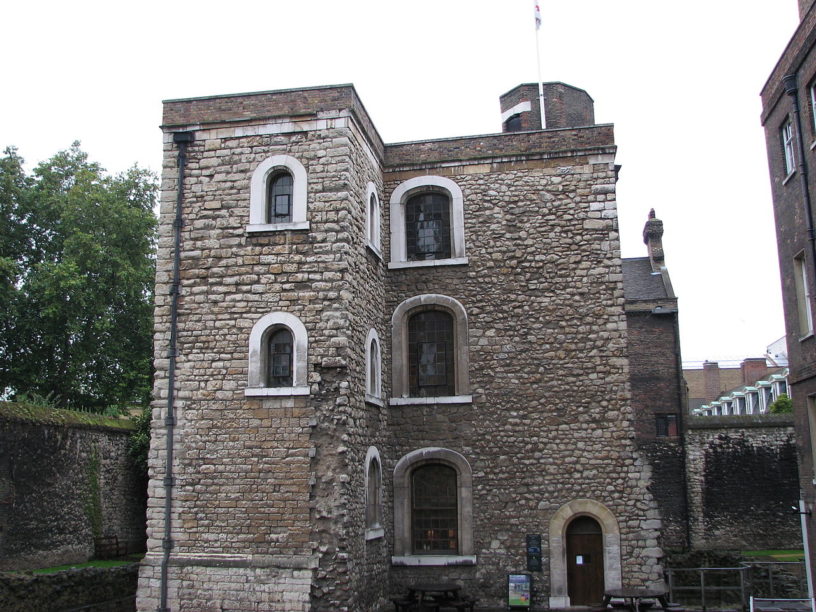5 Of The Oldest Places In London You Can Visit
London is a fascinating city with a past dating back thousands of years. When you visit, it’s fun and informative to visit some of the buildings and locations which have been significant throughout London’s history, such as Winston Churchill’s bunker, the Tower of London and Buckingham Palace. However, although many of these places can be hundreds of years old, they still only scratch the surface of the city as a whole, which has been occupied in one way or another since before the Roman era. Here are five places which you can visit in order to dig a little deeper into London’s past, and understand more about it today.
1. London Mithraeum

Wikimedia Commons
The Roman city of Londinium was not the bustling metropolis we know today, and in fact, it wasn’t even the Roman capital of the country for most of its existence. The city was a walled town, founded in 50 AD and spanning only two miles or so north of the Thames. A tiled wall enclosed the urban center completely, a section of which can still be viewed at its site near the Tower of London. However, by far the most mysterious and fascinating Roman site in the city is the London Mithraeum. Built on the site of the Walbrook, one of London’s long lost rivers, the Mithraeum is a temple to the god Mithras. Mithras was the subject of a mysterious cult which gained prominence in the first century AD, and the temple is an example of a typical meeting place for the exclusively male cult: dark, hidden and subterranean. Today, you can discover this spooky site in all its former glory thanks to its excavation in the 1950s and recent restoration and reconstruction works. The visitor center allows great views of the remains of the temple, along with state of the art technology to bring the era to life.
Address: 12 Walbrook, London EC4N 8AA
Opening times: Monday: Closed, Tuesday – Saturday: 10am – 6pm, Sunday: 12 – 5pm
website
2. 41 Cloth Fair

Wikimedia Commons
Tucked away down an unassuming side street in Farringdon lies the area’s most fascinating gem: a large timbered house bearing the title of The Oldest Inhabited House in London. That’s right, number 41 and 42 Cloth Fair is thought to have been built as far back as 1597, surviving the Great Fire of London and both World Wars to still stand tall today in the 21st Century. It has also seen off several perils, including condemnation for sanitary reasons in the 1920s, and being put up for sale in the 1990s and remaining on the market for almost two years. Luckily, it today enjoys protected status and has been honoured with the City Heritage Award. Throughout its long life, the house has spent time as the home of merchants and architects, and has supposedly welcomed many esteemed guests, including Sir Winston Churchill and the Queen Mother. These guests were instructed to sign the house’s window panes with a diamond tipped pen, which is why such a reliable visitors log endures to this day. While these days the house is not regularly open to the public, you can pay to spend a few nights in one of its guest rooms, and experience its history all for yourself.
Address: 41-42 Cloth Fair, Barbican, London EC1A 7JQ
3. Totteridge Yew

Wikimedia Commons
For those interested in the city’s history, it’s not too difficult to identify London’s oldest buildings, walls or streets. After all, Roman and medieval buildings are quite distinctive among London’s many brand new modern buildings. However, when it comes to London’s oldest trees, the answer has been a lot more elusive.
After over two decades of research, scientists and experts were finally able to declare one winner: a large and bushy yew tree residing in a churchyard in Totteridge. After careful and extensive study, most experts agree that the tree comes in at over 2000 years old, most likely predating the founding of Roman Londinium itself by far.
The area is near a bustling street, so it’s not quite as quiet a spot as a cathedral or countryside park. But if the weather permits, it’s a perfect spot to just sit and take in the day, thinking about the generations of people before you who have enjoyed doing the same thing.
Address: Totteridge Village, London N20 8PR
Church opening times: Monday – Sunday: 8:30am – 5:30pm
website
4. London’s First Drinking Fountain

Telegraph
While a drinking fountain may not be first on your list of fascinating historical sites to visit in London, this small, unassuming drinking fountain nonetheless has a big story to tell, about the society of the time, living standards for ordinary people, and the scientific innovation of the age.
First built in 1859, the water fountain was built at a time when the public water supply was so filthy and diseased that beer was considered a safer option. After a series of cholera outbreaks caused by this, a society was started with the aim of providing better, safer water to Londoners. And so, their first fountain was built, providing free, clean and safe drinking water to all who used it, sometimes up to 7000 people per day.
Bearing the clear, age-old instruction for drinkers to REPLACE THE CUP, the fountain stands as a timely reminder of the need for decent public services, even to this day.
Address: Giltspur St, Farringdon, London EC1A 2DQ
5. Jewel Tower

Wikimedia Commons
Thought to have been built around 1365, this three storey tower is a little on the small side compared with other London attractions such as the famous Tower of London. However, this tiny tower boasts a big history.
Constructed to house the treasures belonging to King Edward III, the tower was protected by a moat and was one of only two buildings to survive the fire of 1834 which destroyed most of the medieval Palace of Westminster. Today, you can visit each story and view a faithful reconstruction of the lost palace. Located centrally in Westminster, it’s easy to squeeze in to your tour of the area.
Address: Abingdon St, Westminster, London SW1P 3JX
Opening times: Monday – Friday: Closed, Saturday – Sunday: 10am – 4pm
website
Planning a trip to Paris ? Get ready !
These are Amazon’s best-selling travel products that you may need for coming to Paris.
Bookstore
- The best travel book : Rick Steves – Paris 2023 – Learn more here
- Fodor’s Paris 2024 – Learn more here
Travel Gear
- Venture Pal Lightweight Backpack – Learn more here
- Samsonite Winfield 2 28″ Luggage – Learn more here
- Swig Savvy’s Stainless Steel Insulated Water Bottle – Learn more here
Check Amazon’s best-seller list for the most popular travel accessories. We sometimes read this list just to find out what new travel products people are buying.










